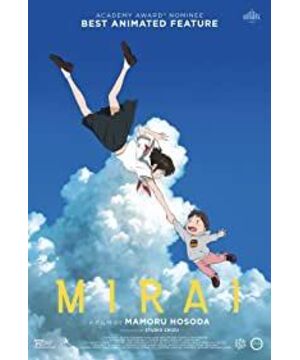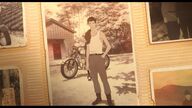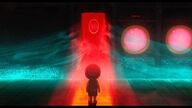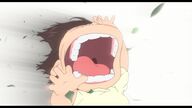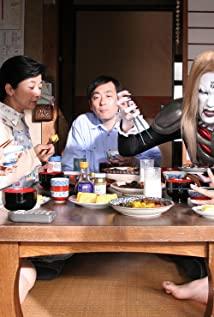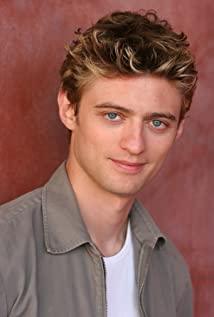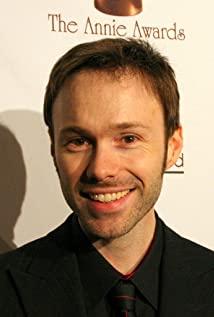An era produces its own portraitists.
The issues that the older generation of Japanese animators pay attention to are always grandiose. Hayao Miyazaki, who loves flying, has been reflecting on human beings, history and the world, while the new generation of animators pay more attention to individuals.
As one of the representatives of the new generation of Japanese animators, Hosoda Mori focuses his attention on individuals and families.
Mamoru Hosoda, who gave birth to a second child, integrated his concerns and personal "Second Child Parenting Classics" into his new work "Future of the Future", showing a child's growth process with wonderful imagination.
Growth is always done inadvertently, especially in young children, which is always so unexpected. Young parents will be pleasantly surprised by their children's sudden eloquence or their mature gestures.
"Who taught all of these?" Parenting parents always have such a sigh.
"The Future of the Future" is an adult interpretation of this sigh. Hosoda Mori makes the protagonist Xiaoxun break into different time and space with a fantastic time, and each time and space has a family member with him for a wonderful time to help the child grow up.
The past acts on the future, and history shapes the present. Personal growth is the result of the constant shaping of past experiences, and the formation of a family is also an extension of its family history.
So the film is called the future, but it tells the past at length.
The future is the name of the protagonist Xiao Xun's sister, and the future of the future is Xiao Xun's younger sister. The addition of a new member of the family made Xiao Xun, who was originally His Royal Highness, ignored, and Xiao Xun, who was crying, entered another fantasy world in the courtyard of his home.
Here, the pet dog Qiuzi has turned into a human, and will also complain to Xiaoxun that he has stolen his favor; and the younger sister who will become a high school student in the future (that is, the future of the future) also appears here, please now The 4-year-old brother Xiaoxun reminded his father to put away the dolls quickly, so as not to get married late (if the puppets are collected one day later, the daughter will marry a year later)......
Whenever Xiaoxun felt neglected and lacked love, he would run out crying and start an adventure through the courtyard of his home.
This magical courtyard is the teaching center of Xiaoxun, which replaces the current parental education and cares for the current Xiaoxun. This is not to criticize the parents' lack of education and love for it.
They are influencing Xiaoxun in another way.
He traveled back to when his mother was a child, and made a big mess with his mother, because the messier the house, the more fun it is, and the messier things are, the more delicious it is;
He traveled back to when his great-grandfather was young, followed him on horseback, rides a motorcycle, and looked into the distance to overcome his fears;
When he and his relatives experienced this and returned to reality, he stopped throwing things around, and he asked his father again to take him to the park to learn how to ride a bicycle, look into the distance, and eliminate his fears.
His growth was completed under the implicit influence of his family members
This is probably Mamoru Hosoda's most profound experience. The moments of unreasonable vexatious children shown in the film must be his own experience, and it is also something every parent has experienced.
How did the child suddenly become so sensible
Hosoda Mori connects personal growth with family and family, which is an extension of his consistent focus on family themes.
The introduction of family history makes the film not limited to a small-scale personal experience, but has a sense of depth in time and space.
At the end of the film, the future of the future and Xiaoxun look back at the history of the entire family in the air, from the legendary running race of the great-grandfather and great-grandmother to the father learning to ride a bicycle. , making the two brothers and sisters
Let "I" become "I"
This is Mamoru Hosoda's examination of history
However, it is also designed like the final ending, Hosoda Mori is too deliberate and straightforward to let the characters say what they want to say.
He explained the child's behavior from an adult's perspective, and imagined the child's motives from an adult's perspective, and the result was embarrassment.
Every time Xiao Xun's waywardness and nonsense are really childish, this is really far from the old-timer "Flying Miyazaki Hayao". His story is also really lackluster
Hosoda Mori arranged the whole story in a very clever way. He composed the whole film one by one, and every time he passed through Xiao Xun was when he lost his temper.
There are details but no whole, and there are no shortage of good sentences but it is difficult to form a chapter.
This way reminds me of Yue Yunpeng's "Nineteen Generations of Ancestors"
what an outrageous crossing
Crossing the stem is easy to use, I hope Hosoda uses it with caution.
{]�p�E
View more about Mirai reviews


